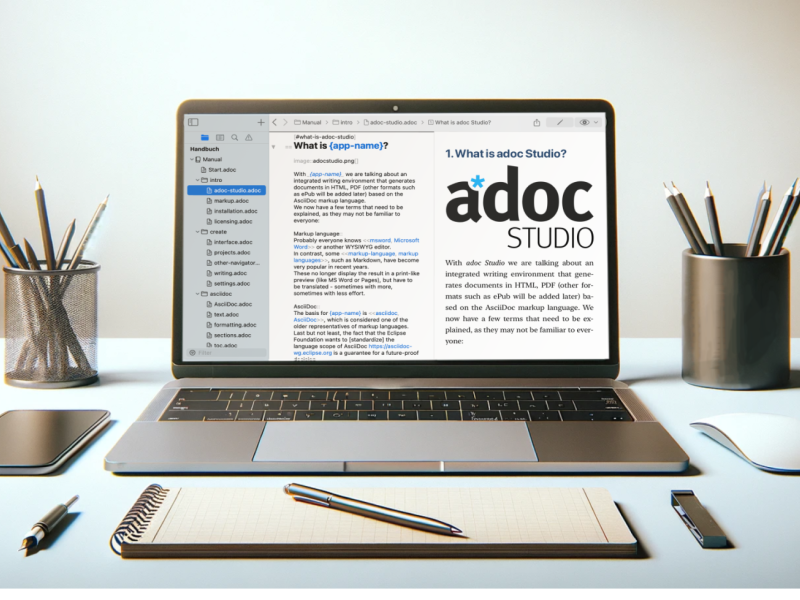The history of AsciiDoc. Find out how the markup language came about and who made a significant contribution to its development.
It is the early 2000s. The digital world is developing at the speed of light. Nevertheless, it remains complicated and cumbersome to create and maintain technical documents. The prevailing XML-based formats such as DocBook are powerful but complex and difficult to manage. Developers and technical writers struggle with the complexity and error-proneness of these systems.
Enter: Stuart Rackham. As a software developer and technical writer, he recognized the need for a simple, accessible markup language that overcame this complexity. He wanted to create a language that both humans and machines could easily understand.
AsciiDoc was born out of this need in 2002. As a simple, readable markup language, it converts documents into various formats such as HTML, PDF and DocBook. The goal: authors should be able to write in a text editor and receive a well-formatted end product as quickly as possible.
The open source community welcomed AsciiDoc enthusiastically. Developers and technical authors worldwide used the language and appreciated its efficiency and clarity. Rackham's vision of a human- and machine-readable language became a reality.
Dan Allen came onto the scene in 2013. He saw the potential of AsciiDoc and decided to develop the project further. Together with Sarah White, he created Asciidoctor, an implementation in Ruby. Asciidoctor was faster and more feature-rich, which made the use of AsciiDoc more widespread.
AsciiDoc, once just an idea, is now a global standard. The language has since been adopted by many companies and organizations. GitHub supports AsciiDoc in its repositories, and Antora uses it to create extensive documentation pages.
 adoc Studio
adoc Studio
Organize, Write and Share.
Documentation in AsciiDoc.
Organize, Write and Share.
You might also like
-
AsciiDoc in Comparison
- Marvin Blome
- Published on
-
The History of Writing
- Marvin Blome
- Published on
-




